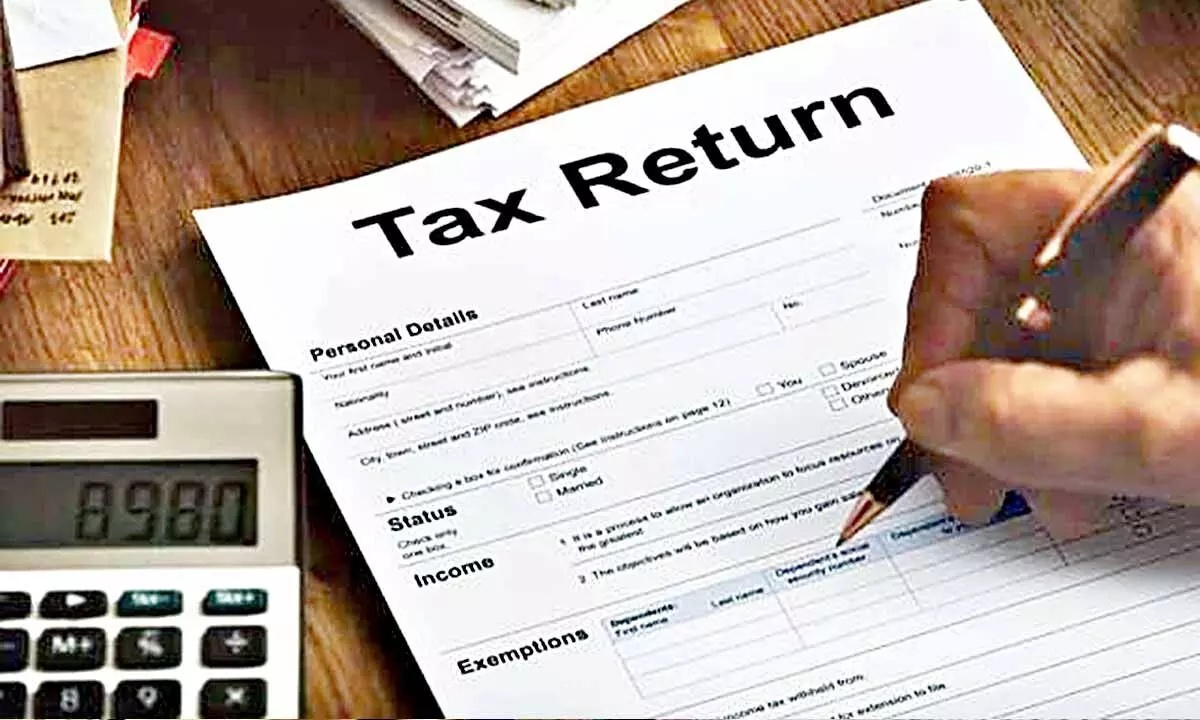DIY | ITR filing, four ways to file income tax return
You can file your income tax return on your own through the income tax department’s e-filing website, or take the help of experts like tax return preparers (TRPs), e-filing intermediaries, or chartered accountants.
image for illustrative purpose

You can file your income tax return on your own through the income tax department's e-filing website, or take the help of experts like tax return preparers (TRPs), e-filing intermediaries, or chartered accountants.
You have the option of filing it on your own, or availing the services of various experts to compute your income and tax liability, prepare the return, and file it. These experts include government-approved service providers, private intermediaries, and chartered accountants. Whatever it takes, make sure you file the return before the due date.
Do it yourself
Over the years, the IT-Department has made all the services available online, filing income tax returns are now largely online, except in a few cases.
If you are a salaried individual, with no other source of income other than salary, you can easily file your return through the I-T department's e-filing portal (www.incometax.gov.in).
However, a super senior citizen (whose age is 80 years or above at any time during the previous year), who needs to furnish the return either in ITR-1 or ITR-4, can also use paper form to file the return.
To file the ITR online, you first need to create an account by registering and creating a user ID and password with the help of your PAN details. Once you have created and logged into the account on the IT department's website, you will have two options to file the ITR — partially and fully online.
In the case of a partially online process, you need to download the relevant ITR form from the website and save it on your desktop. Fill up the return offline and generate an XML file and save it on the desktop, then upload the XML file on the e-filing website and submit.
In the second option, you need to select the relevant ITR form applicable to you and fill in the required details online and submit the form.
In both processes, an acknowledgement slip gets generated on successful submission. Make sure you choose the correct ITR forms, fill in the details properly, and verify the return to complete the process.
In order to help the taxpayers prepare and file their returns, the government notified the Tax Return Preparers Scheme, 2006. Under this scheme, the government gives training to people to act as authorised tax return preparers (TRPs).
A TRP can charge a maximum fee of Rs 250 per return. However, the TRP is also entitled to get incentives (a fixed percentage of tax collected through them) from the IT-department.
You can find an authorised TRP in and around your area from the income tax website or visit the website and click on 'read more' under the Tax Information and Services columns and then click on 'Locate TRP'. You can search for a TRP near you on the basis of GPS location or Address or Pin Code.
In order to improve interface with the taxpayers, the IT-Department introduced a scheme titled 'Electronic Furnishing of Return of Income Scheme, 2007'. This scheme enables authorised intermediaries to electronically file the ITR on behalf of the taxpayers. This scheme is available to any taxpayer who is assessed or assessable to tax. While TRPs are not so popular, e-filing intermediaries have become a go-to-option for many tax filers who need better interface and assistance to file their return.
Typically, e-filing intermediaries charge a fee, which differ based on several factors like sources of income, level of income and complexities. For instance, Clear, an e-filing intermediary charges Rs 999 to assist you file your return, if you are an individual with only salary income and income from fixed deposits or/and savings account interest.
For those having foreign income or capital gains, the charges for assistance to file the return are Rs 5,999 and Rs 3,999 respectively. Similarly, TaxManager, another e-filing intermediary, charges Rs 1,250 onwards to assist a salaried individual file his or her return.
For those having capital gains or are self-employed or professionals, the charges are Rs 3,000 and Rs 3,500 onwards, respectively. For non-resident Indians (NRIs) seeking assistance to file an ITR, the fee starts at Rs 4,500.
However, before you decide to use the services of an e-filing intermediary, make sure it is authorised by the I-T Department. After all, you are required to share all your critical information with them, including data related to personal, income, bank details, and so on.
To find out whether they are an authorised intermediary or not, check their name on the I-T department's website. Click on the list of registered e-Return Intermediaries and find out. However, the current list is not updated. You may ask an e-filing intermediary to provide a user ID and organisation name and check the validity.
In case you have multiple sources of income or are unable to handle the complexities, it is best to approach a chartered account (CA), instead of making mistakes in filing the returns. In fact, in some cases where there is a requirement of tax audits, preparation of balance sheet and so on, you have no option other than to consult a CA.
Usually, for simple returns, CA firms charge a fee of up to Rs 5,000. However, depending on the business level and complexity of income computation, fees can be much higher.
Make use of any of the above ways to file your return before the due date to file ITR, i.e. July 31, 2022.

